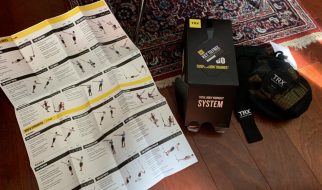A Pentester?s Guide to Windows Hashes
When attacking AD, passwords are stored and sent in different ways, depending on both where you find it and the age of the domain. Most of these hashes are confusingly named, and both the hash name and the authentication protocol is named almost the same thing. It doesn?t help that every tool, post and guide that mentions credentials on Windows manage to add to the confusion. This is my attempt at clearing things up.
This post is geared towards pentesters in an AD environment, and it favors practical attacks against the different hash formats. A lot of inspiration is taken from byt3bl33der?s awesome article, ?Practical guide to NTLM Relaying in 2017?. If I?m missing something, please hit me up.
All example hashes are taken from Hashcat?s example hashes page. The hashes I?m looking at is LM, NT, and NTLM (version 1 and 2).
LM
About the hash
LM-hashes is the oldest password storage used by Windows, dating back to OS/2 in the 1980?s. Due to the limited charset allowed, they are fairly easy to crack. You can obtain them, if still available, from the SAM database on a Windows system, or the NTDS database on the Domain Controller.
LM was turned off by default starting in Windows Vista/Server 2008, but might still linger in a network if there older systems are still used. It is possible to enable it in later versions through a GPO setting (even Windows 2016/10).
When dumping the SAM/NTDS database, they are shown together with the NTHash, before the colon.
Example
299BD128C1101FD6
The algorithm
1. Convert all lower case to upper case2. Pad password to 14 characters with NULL characters3. Split the password to two 7 character chunks4. Create two DES keys from each 7 character chunk5. DES encrypt the string “KGS!@#$%” with these two chunks6. Concatenate the two DES encrypted strings. This is the LM hash.
Cracking it
john –format=lm hash.txthashcat -m 3000 -a 3 hash.txt
NTHash (A.K.A. NTLM)
About the hash
This is the way passwords are stored on modern Windows systems, and can be obtained by dumping the SAM database, or using Mimikatz. They are also stored on domain controllers in the NTDS file. These are the hashes you can use to pass-the-hash.
Usually people call this the NTLM hash (or just NTLM), which is misleading, as Microsoft refers to this as the NTHash (at least in some places). I personally recommend to call it the NTHash, to try to avoid confusion.
Example
B4B9B02E6F09A9BD760F388B67351E2B
The algorithm
MD4(UTF-16-LE(password))
UTF-16-LE is the little endian UTF-16. Windows used this instead of the standard big endian, because Microsoft.
Cracking it
john –format=nt hash.txthashcat -m 1000 -a 3 hash.txt
NTLMv1 (A.K.A. Net-NTLMv1)
About the hash
The NTLM protocol uses the NTHash in a challenge/response between a server and a client. The v1 of the protocol uses both the NT and LM hash, depending on configuration and what is available. The Wikipedia page on NT Lan Manager has a good explanation.
A way of obtaining a response to crack from a client, Responder is a great tool. The value to crack would be the K1 | K2 | K3 from the algorithm below. Version 1 is deprecated, but might still be used in some old systems on the network.
Example
u4-netntlm::kNS:338d08f8e26de93300000000000000000000000000000000:9526fb8c23a90751cdd619b6cea564742e1e4bf33006ba41:cb8086049ec4736c
The algorithm
C = 8-byte server challenge, randomK1 | K2 | K3 = LM/NT-hash | 5-bytes-0response = DES(K1,C) | DES(K2,C) | DES(K3,C)
Cracking it
john –format=netntlm hash.txthashcat -m 5500 -a 3 hash.txt
NTLMv2 (A.K.A. Net-NTLMv2)
About the hash
This is the new and improved version of the NTLM protocol, which makes it a bit harder to crack. The concept is the same as NTLMv1, only different algorithm and responses sent to the server. Also captured through Responder or similar. Default in Windows since Windows 2000.
Example
admin::N46iSNekpT:08ca45b7d7ea58ee:88dcbe4446168966a153a0064958dac6:5c7830315c7830310000000000000b45c67103d07d7b95acd12ffa11230e0000000052920b85f78d013c31cdb3b92f5d765c783030
The algorithm
SC = 8-byte server challenge, randomCC = 8-byte client challenge, randomCC* = (X, time, CC2, domain name)v2-Hash = HMAC-MD5(NT-Hash, user name, domain name)LMv2 = HMAC-MD5(v2-Hash, SC, CC)NTv2 = HMAC-MD5(v2-Hash, SC, CC*)response = LMv2 | CC | NTv2 | CC*
Cracking it
john –format=netntlmv2 hash.txthashcat -m 5600 -a 3 hash.txt
IN SUMMARY
LM- and NT-hashes are ways Windows stores passwords. NT is confusingly also known as NTLM. Can be cracked to gain password, or used to pass-the-hash.
NTLMv1/v2 are challenge response protocols used for authentication in Windows environments. These use the NT-hash in the algorithm, which means it can be used to recover the password through Brute Force/Dictionary attacks. They can also be used in a relay attack, see byt3bl33d3r?s article [1].
If you?re still confused, I would recommend reading the Wikipedia articles. I do hope this intro clears up the confusing language and can somehow help you.
Sources
[1] https://byt3bl33d3r.github.io/practical-guide-to-ntlm-relaying-in-2017-aka-getting-a-foothold-in-under-5-minutes.html
[2] https://technet.microsoft.com/en-us/library/dd277300.aspx#ECAA
[3] https://en.wikipedia.org/wiki/LAN_Manager
[4] https://en.wikipedia.org/wiki/NT_LAN_Manager
[5] https://en.wikipedia.org/wiki/Security_Account_Manager
[6] https://hashcat.net/wiki/doku.php?id=example_hashes

